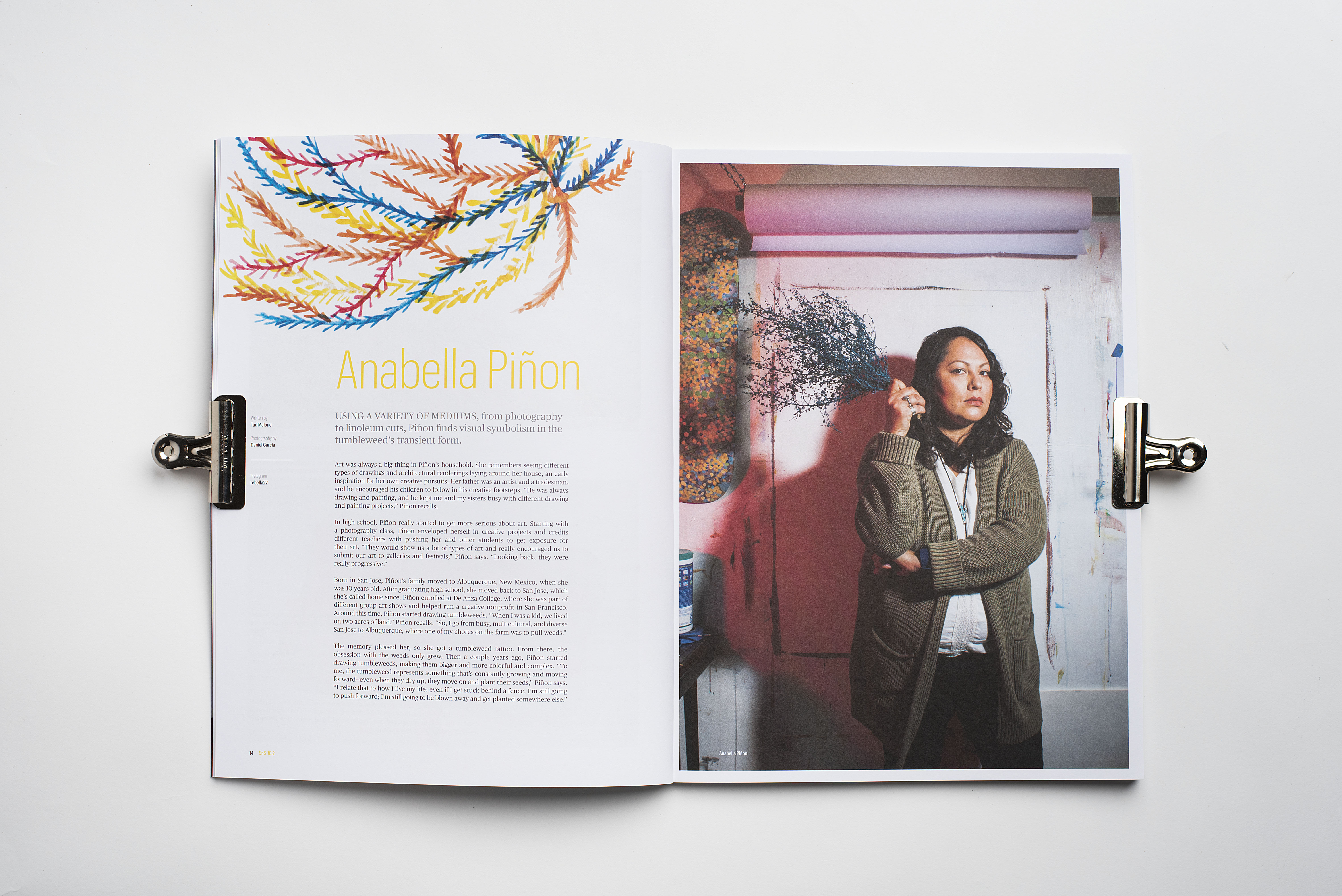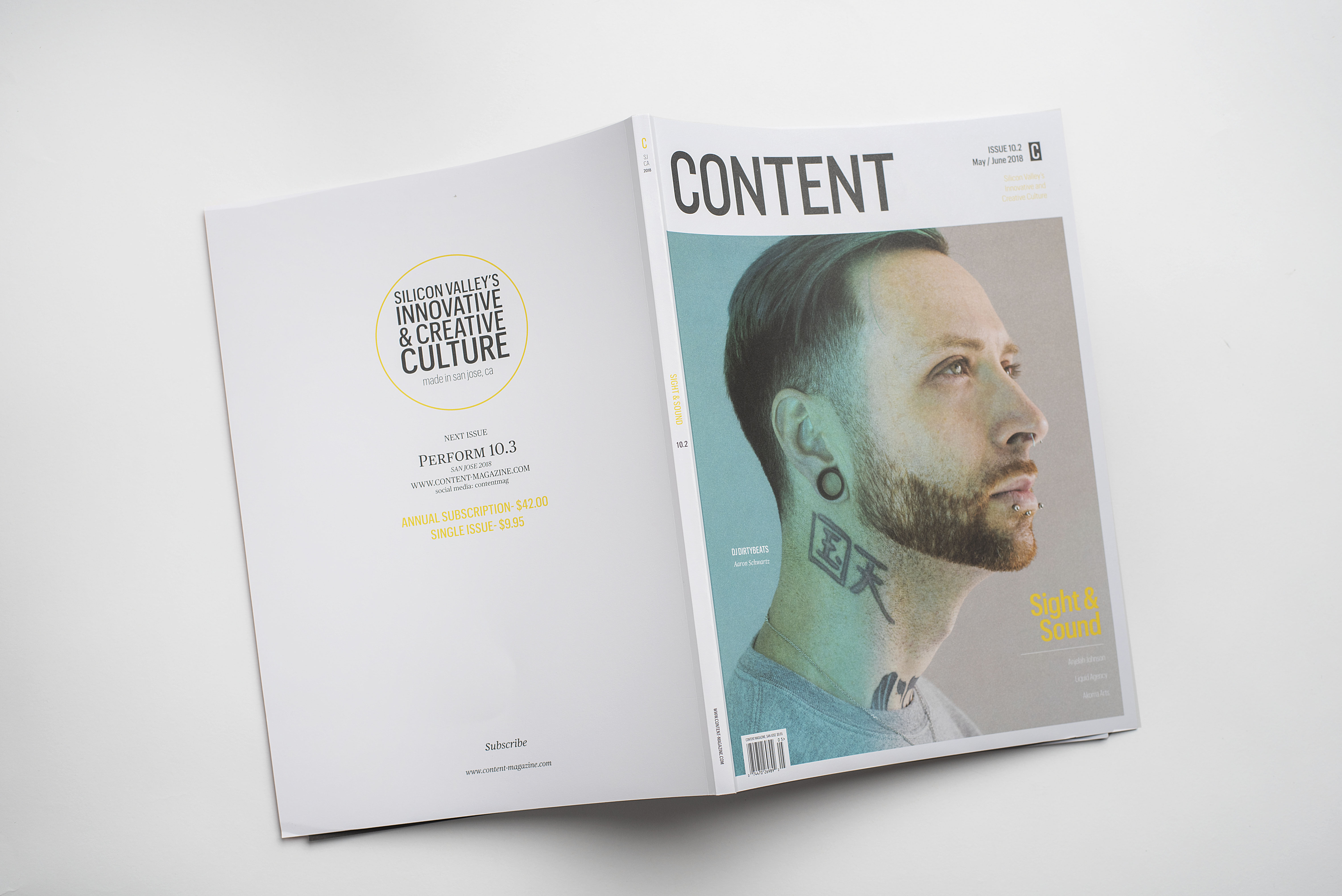
Art was always a big thing in Piñon’s household. She remembers seeing different types of drawings and architectural renderings laying around her house, an early inspiration for her own creative pursuits. Her father was an artist and a tradesman, and he encouraged his children to follow in his creative footsteps. “He was always drawing and painting, and he kept me and my sisters busy with different drawing and painting projects,” Piñon recalls.
In high school, Piñon really started to get more serious about art. Starting with a photography class, Piñon enveloped herself in creative projects and credits different teachers with pushing her and other students to get exposure for their art. “They would show us a lot of types of art and really encouraged us to submit our art to galleries and festivals,” Piñon says. “Looking back, they were
really progressive.”
Born in San Jose, Piñon’s family moved to Albuquerque, New Mexico, when she was 10 years old. After graduating high school, she moved back to San Jose, which she’s called home since. Piñon enrolled at De Anza College, where she was part of different group art shows and helped run a creative nonprofit in San Francisco. Around this time, Piñon started drawing tumbleweeds. “When I was a kid, we lived on two acres of land,” Piñon recalls. “So, I go from busy, multicultural, and diverse San Jose to Albuquerque, where one of my chores on the farm was to pull weeds.”
“I’m driven by very simple things in life, so I’m inspired by just having time to devote to an artistic project. I’m also inspired by what artists around me are doing currently and the kind of impact they are making during their time.” –Anabella Piñon
The memory pleased her, so she got a tumbleweed tattoo. From there, the obsession with the weeds only grew. Then a couple years ago, Piñon started drawing tumbleweeds, making them bigger and more colorful and complex. “To me, the tumbleweed represents something that’s constantly growing and moving forward—even when they dry up, they move on and plant their seeds,” Piñon says. “I relate that to how I live my life: even if I get stuck behind a fence, I’m still going to push forward; I’m still going to be blown away and get planted somewhere else.”
Piñon soon found that aesthetic representations of tumbleweeds had some interesting applications. Using a variety of mediums, from 35mm film photography to acrylic paint, Piñon finds visual symbolism in the tumbleweed’s transient form. She also creates large-scale tumbleweeds and wheat pastes them or renders them with spray paint in public spaces, giving the tumbleweeds a more appropriate home—out in the wild. Piñon experiments with as many mediums and materials as she can to create the tumbleweeds. One of her more recent experiments used linoleum cuts to portray a skeletal tumbleweed form.
Her most recent pieces incorporate tumbleweeds into figurative portraits, with the spindly shapes substituted for Frida Kahlo’s hair or Pancho Villa’s bandalero. The effect is harmonious, with the tumbleweeds dissolving into expressive shapes and tones, synthesizing the contrasts between real and artificial, manmade and natural. “Those recent pieces were born out of me thinking about how much weight these people, like Pancho Villa, had to carry and what that represents,” Piñon says. “I really wanted to give a value to the tumbleweeds, something most people walk right by or rip out of the ground.”
Beyond the tumbleweeds, Piñon has an extensive background in the arts community, something she is quite modest about. She used to teach art, and she was heavily involved in curating and organizing art shows and volunteering at art workshops. Nowadays, Piñon mostly makes art for herself. “I’m driven by very simple things in life, so I’m inspired by just having time to devote to an artistic project. I’m also inspired by what artists around me are doing currently and the kind of impact they are making during their time,” Piñon shares.
As for the future, Piñon plans to keep it low-key and cultivate the feeling of making art for herself.
Instagram: rebella22
Article Originally appeaered in issue 10.2, Sight and Sound, 2018.
SOLD OUT


